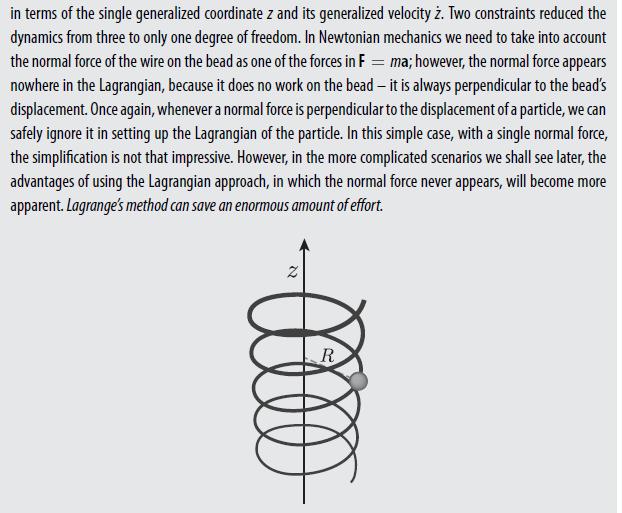Example 4.2 featured a bead sliding on a vertically-oriented helix of radius (R). The angle (theta) about
Question:
Example 4.2 featured a bead sliding on a vertically-oriented helix of radius \(R\). The angle \(\theta\) about the symmetry axis was related to its vertical coordinate \(z\) on the wire by \(\theta=\alpha z\). There is a uniform gravitational field \(g\) vertically downward.
(a) Rewrite the Lagrangian and find the Lagrange equation, using \(\theta\) as the generalized coordinate.
(b) Are there any conserved dynamical quantities?
(c) Write the simplest differential equation of motion of the bead, and go as far as you can to solve analytically for \(\theta\) as a function of time.
Data from Example 4.2


A bead sliding on a vertically oriented helical wire.
Fantastic news! We've Found the answer you've been seeking!
Step by Step Answer:
Related Book For 

Question Posted:





